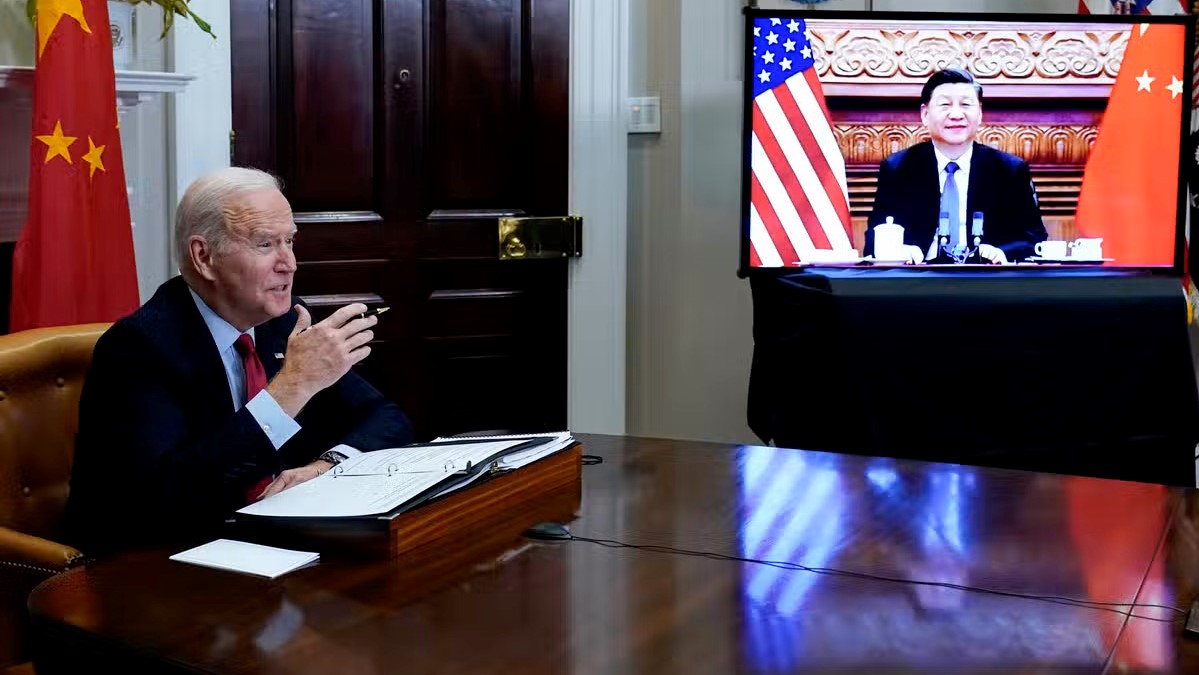Published 02 August 2022
The Biden administration’s China strategy is a tacit recognition that the US was slow to grasp the magnitude of China's challenge. It remains to be seen if initiatives such as the Indo-Pacific Economic Framework will ultimately prove to be effective. As events unfold, there are four unanswered questions to keep an eye on.
US President Joe Biden and Chinese President Xi Jinping have just concluded a two hour and seventeen-minute phone call – their first in four months and fifth since President Biden took office. The call comes at a time of escalating tensions between the countries on issues ranging from a potential Taiwan visit by Speaker of the House Nancy Pelosi, frayed relations over the war in Ukraine, ongoing frictions in trade and technology policy, and a stepped-up US willingness to criticize China’s human rights practices.
No major breakthroughs were anticipated, and none were delivered. Neither the White House nor China’s Ministry of Foreign Affairs indicated that the topic of a possible reduction in Trump-era tariffs was discussed. Debate within the Biden administration over the tariffs continues, with no potential action anticipated for now. Speaking on a background phone call with reporters several hours later, an unnamed senior administration official indicated that Biden did however express his “core concerns with China’s unfair economic practices”.
The US readout stressed Biden’s desire to “maintain and deepen lines of communication between the United States and the PRC and responsibly manage our differences and work together where our interests align.” President Xi – according to official Chinese sources – “underscored that to approach and define China-US relations in terms of strategic competition and view China as the primary rival and the most serious long-term challenge would be misperceiving China-US relations and misreading China’s development, and would mislead the people of the two countries and the international community”.
What is Biden’s China strategy?
President Xi’s comments were a pointed rebuke of the Biden administration’s explicitly articulated China policy. After much hemming and hawing, the Biden administration finally laid out its China strategy in a speech delivered by US Secretary of State Anthony Blinken in May.
According to Blinken, the post-WWII rules-based global order has been immensely beneficial. It is not based on Western values; it is based on the “world’s shared aspirations”. But now the system is under “serious and sustained challenge”. China is the “most serious long-term challenge to the international order”. China has benefited from the system perhaps more than anyone, but it has not used its power to “reinforce” the system.
The Biden administration’s China strategy is a tacit recognition that the US was slow in the early years of the 21st century to grasp the magnitude – and seriousness - of China’s challenge. The US is now moving deliberately to respond, both unilaterally and in concert with like-minded partners.
The signature trade initiative of the Biden administration is the Indo-Pacific Economic Framework, a vaguely defined proposed trade grouping plainly intended to counterbalance China’s influence in the region. The US, along with its G-7 partners, has launched the Partnership for Global Infrastructure and Investment (PGII), a putative rejoinder to China’s Belt and Road Initiative. The US-EU Trade and Technology Council is seeking unified action on a variety of China issues, including a more forceful response to trade distortions created by non-market economies, and a desire to reduce supply chain dependency on China.
It remains to be seen if Biden’s China strategy will ultimately prove to be smart or effective. As events unfold, here are four unanswered questions to keep an eye on:
1. Will the Indo-Pacific Economic Framework amount to anything?
The US hopes and intends that the IPEF will substantially reassert US economic influence in the region, but at this stage in the game, all we really have is an agreement among members to start talking about negotiations on four vaguely defined pillars. How much ultimately gets over the goal line – and whether any of it will matter – remains to be seen. The lack of market access commitments means the US will have limited leverage in securing meaningful commitments from its negotiating partners. It is also unclear what – if any – enforcement mechanisms the framework will include, raising the possibility that commitments will be made but not implemented. And the entire undertaking could be scuppered by US elections. The negotiations are optimistically slated to take 18-24 months. Depending on who US voters send to the White House in 2024, the plug could be pulled on this initiative before it gets off the ground.
2. Will the US put its money where its mouth is?
The Biden administration’s China strategy will come with a substantial price tag, but it is as yet unclear if the US will have the desire and wherewithal to make the required investments. The $280 billion contained in the CHIPS Act – aimed at maintaining the US lead over China in semiconductors - is just the beginning if the US is serious about moving the needle. The G-7 PGII comes with a commitment of $600 billion in investment over five years, but read the fine print. The dollar figures depend heavily on private sector investments, which governments can encourage but cannot compel. In any event, governmental financial pledges contained in closing statements of high-profile meetings are broken as often as they are fulfilled. In other cases, the pledged amounts are insufficient even if they are met. The $150 million investment in ASEAN announced at the Washington summit this spring – intended to signal US engagement in the region - is almost embarrassingly small and pales in comparison to the investments China is making.
3. Can the US execute industrial policy?
The term “industrial policy” has been a pejorative in Washington DC for decades. China’s economic rise under a model of state-directed capitalism and large-scale industrial policy has forced a reconsideration. The taboo against industrial policy in the US appears to have been broken. Both in terms of legislation moving through Congress and executive action proposed or taken by the administration, US efforts to respond to China on issues ranging from technology to supply chains essentially amount to industrial policy. The success of these policies will require not only substantial subsidization but also intricate and sophisticated levels of coordination between private business and a multitude of government agencies and actors. China’s centrally managed economy and blurred lines between business and government has facilitated China’s success with industrial policy. Although US history contains more examples of successful industrial policy than is generally recognized, it is entirely unclear if the US’ very different system will permit a similar level of success today.
4. Can the Biden administration sustain focus on China?
The domestic political context is immensely fractious, even within the Democratic party and midterm elections are on the immediate horizon. High gasoline prices, rising inflation, and the potential for recession are likely to be priority issues in the White House for the foreseeable future. Divisive social issues ranging from abortion to gun control dominate public debate and demand political response. The war in Ukraine is the most combustible foreign policy challenge in decades, and it is unclear how – or if - it can be brought to a satisfactory resolution. Covid appears to be receding but remains a pressing public health concern and a social and political flashpoint. Given this daunting litany, does the Biden administration have the staying power to focus the required attention on China?
It is far too early to draw definitive conclusions on any of these questions. But the manner in which they play out will go a long way towards determining how successful Biden’s China strategy will be and the overall course of US-China relations.
© The Hinrich Foundation. See our website Terms and conditions for our copyright and reprint policy. All statements of fact and the views, conclusions and recommendations expressed in this publication are the sole responsibility of the author(s).





